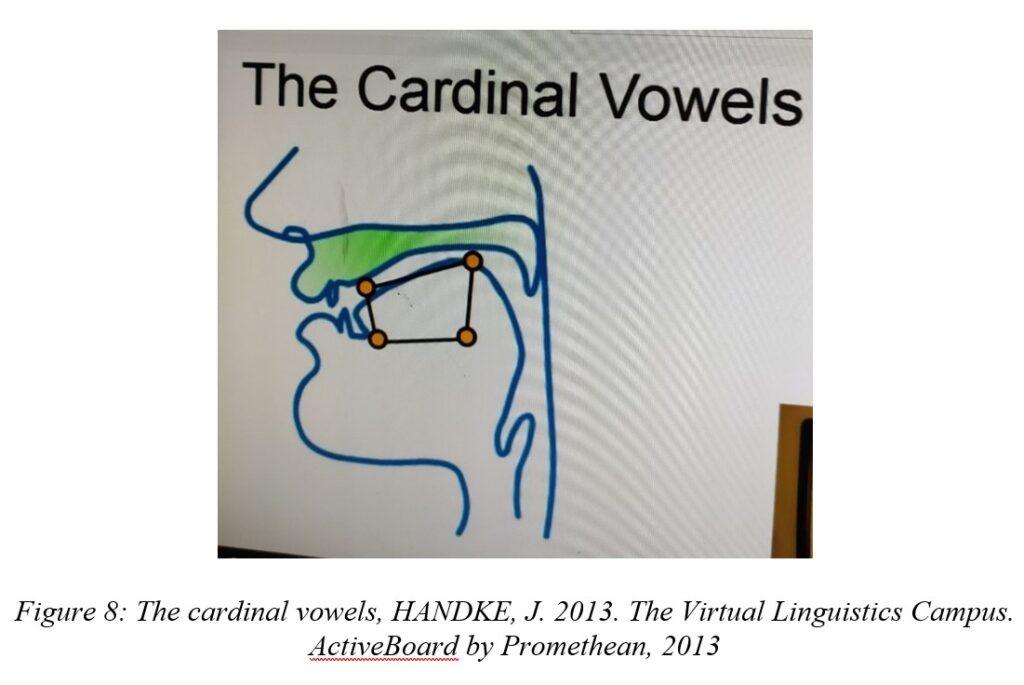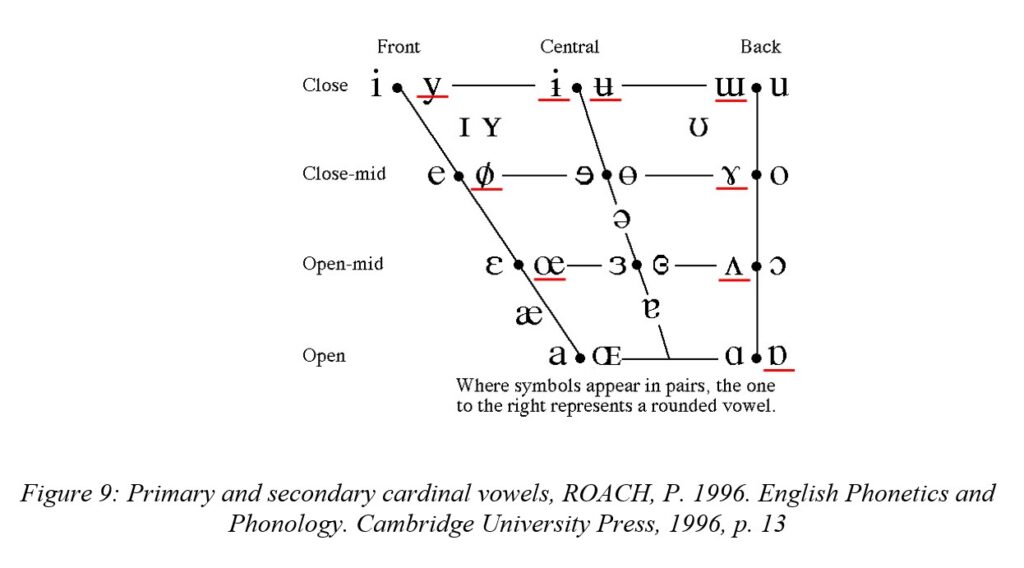PHONETICS AND PHONOLOGY
Segmental Aspects
CARDINAL VOWELS
In the past, it was considered difficult, even for the scholars dealing with pronunciation, to accurately describe the positions of the articulators for the pronunciation of vowels.
Daniel Jones, a British phonetician, one of the most prominent scholars ever, therefore devised a reference system of the so-called cardinal vowels according to which it was possible to classify any vowel of any language. To define the term cardinal vowels, it is important to explain that cardinal vowels are not real vowels. They were “artificially created for one phonetic purpose: they serve as a standard reference system through which real vowels of real languages can be described and compared. Such reference system of vowel qualities enables phoneticians to evaluate and characterize any vowel from any language” (Borošová, 2017, p. 32). Daniel Jones presented a diagram called quadrilateral on which he marked the positions of the articulatory organs when pronouncing individual vowels.
The diagram corresponds to the shape of the oral cavity. The four reference points (presented in Figure 8) mark the extreme positions of the articulators when pronouncing the vowels [i a a u] according to which the rest of the vowels articulated in various languages is defined (later presented as the vowels number 1, 4, 5, 8 which represent the extreme points in pronunciation of the vowels). Quality of the vowels is primarily determined by the tongue position, secondarily by lip position.
- 4 reference points:
/i/ – the most front, the highest tongue positio
/a/ – the lowest, the most back
/a/ – extremely low, the most front tongue position
/u/ – back and extremely high

Jones classified the cardinal vowels as primary and secondary. The way of their pronunciation is notated in square brackets to point at their real articulation properties. There are 18 cardinal vowels altogether, but what is important to emphasise is the fact that cardinal vowels occur in various languages, these are not vowels of only one particular language. Secondary cardinal vowels are related to the primary ones by the opposite lip position (rounded and unrounded).

|
cardinal |
description |
|
|
1 |
[i] |
close front unrounded vowel |
|
2 |
[e] |
close-mid front unrounded vowel |
|
3 |
[ɛ] |
open-mid front unrounded vowel |
|
4 |
[a] |
open front unrounded vowel |
|
5 |
[ɑ] |
open back unrounded vowel |
|
6 |
[ɔ] |
open-mid back rounded vowel |
|
7 |
[o] |
close-mid back rounded vowel |
|
8 |
[u] |
close back rounded vowel |
|
9 |
[y] |
close front rounded vowel |
|
10 |
[ø] |
close-mid front rounded vowel |
|
11 |
[œ] |
open-mid front rounded vowel |
|
12 |
[ɶ] |
open front rounded vowel |
|
13 |
[ɒ] |
open back rounded vowel |
|
14 |
[ʌ] |
open-mid back unrounded vowel |
|
15 |
[ɤ] |
close-mid back unrounded vowel |
|
16 |
[ɯ] |
close back unrounded vowel |
|
17 |
[ɨ] |
close central unrounded vowel |
|
18 |
[ʉ] |
close central rounded vowel |
The set of cardinal vowels helps describe and classify the vowel sounds of various languages more accurately, because this system serves as a standard reference system (Pavlík, 2000).
Primary cardinal vowels (numbers 1 – 8) are found in the phonemic inventories of most of the European languages, while secondary cardinal vowels (numbers 9 – 18) represent the vowel-quality that is rather unusual, less common in the world’s languages. These vowels do not sound familiar to us (they are mainly used in non-European languages), they sound strange and exaggerated, The secondary cardinal vowels manifest extreme positions of the articulators, which means the sounds that could be made by the human vocal apparatus when the articulators achieve extreme positions. When pronouncing them, the tongue occurs in an extreme position, either front/ back or high/ low. If the symbols occur in pairs on the graph, the vowel on the right represents a rounded counterpart of the vowel on the left (Roach, 1996).

